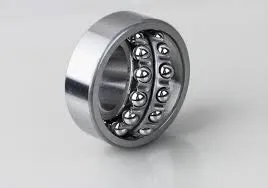
nov. . 08, 2024 08:13 Back to list
Understanding the Purpose and Function of Thrust Bearings in Mechanical Systems
Thrust Bearings Purpose and Applications
Thrust bearings are specialized mechanical components designed to support axial loads—forces that are applied parallel to the shaft's axis. This capability makes them essential in various applications where vertical or horizontal forces must be distributed effectively and efficiently. Thrust bearings come in various forms, including ball thrust bearings, roller thrust bearings, and fluid thrust bearings, each serving specific purposes based on the operational environment and load conditions.
The Purpose of Thrust Bearings
The primary function of thrust bearings is to reduce friction between moving parts while supporting the weight of additional loads. In many machinery applications, these bearings facilitate smooth rotation and precise movements, allowing for better performance and longevity of the equipment. By accommodating axial loads, thrust bearings protect vital components from excessive wear and premature failure.
Different Types of Thrust Bearings
1. Ball Thrust Bearings These consist of balls placed between two grooved rings. They are capable of handling both radial and axial loads but are most efficient in situations where the axial load is the primary concern. Ball thrust bearings are commonly utilized in applications like automotive wheel hubs and small machinery.
2. Roller Thrust Bearings This type features cylindrical rollers instead of balls, which increases the contact area and helps distribute loads more evenly. Roller thrust bearings are typically used in heavy-duty applications, such as in marine propulsion systems and in gear drives, where they can effectively manage substantial axial loads.
3. Fluid Thrust Bearings Utilizing a thin layer of fluid to separate the moving surfaces, fluid thrust bearings work through hydrodynamic or hydrostatic principles. These bearings are highly effective in high-speed operations and can provide exceptional performance with minimal friction. They are found in applications like turbines and large machinery where high loads and speeds coexist.
what are thrust bearings used for

Applications of Thrust Bearings
Thrust bearings play a crucial role in various industrial applications. Here are a few prominent examples
- Automotive Industry In vehicles, thrust bearings are used in the transmission systems to support the axial loads generated during operation. They ensure the gears rotate smoothly, enhancing both performance and durability.
- Aerospace In aviation, thrust bearings are critical for systems such as engines and landing gear. They help manage the high pressures and forces involved during takeoff, landing, and sustained flight, ensuring the safety and reliability of the aircraft.
- Industrial Machinery Many types of manufacturing equipment use thrust bearings to sustain heavy loads without compromising operational efficiency. This includes conveyor systems and pumps, where thrust bearings facilitate smooth operation under constant use.
- Marine Applications In marine propulsion systems, thrust bearings are essential for handling the axial loads produced by propellers and other rotating machinery. Their reliability is vital for the safe and efficient operation of boats and ships.
Conclusion
Thrust bearings are integral components in many mechanical systems, offering essential support for axial loads across a range of industries. Understanding the different types of thrust bearings and their specific applications helps in selecting the right bearing for any given task, ultimately enhancing performance and prolonging the life of machinery. As technology continues to evolve, thrust bearings will adapt, incorporating advanced materials and designs to meet the ever-increasing demands of modern applications.
Latest news
-
Premium Deep Groove Ball Bearings | High Speed & Reliability
NewsAug.29,2025
-
Durable Scaffolding Clamps - Secure & Reliable Tube Connectors
NewsAug.28,2025
-
Common Failures in Thrust Ball Bearings and Solutions
NewsAug.22,2025
-
How Tapered Roller Bearings Can Take Shock Loads
NewsAug.22,2025
-
Angular Bearings in High-Precision Spindles
NewsAug.22,2025
-
The Impact of Misalignment on Cylindrical Roller Bearing Performance
NewsAug.22,2025
